Why Do Wrinkles Form? + How to Smooth Them Out Naturally
Why Do Wrinkles Form? + How to Smooth Them Out Naturally
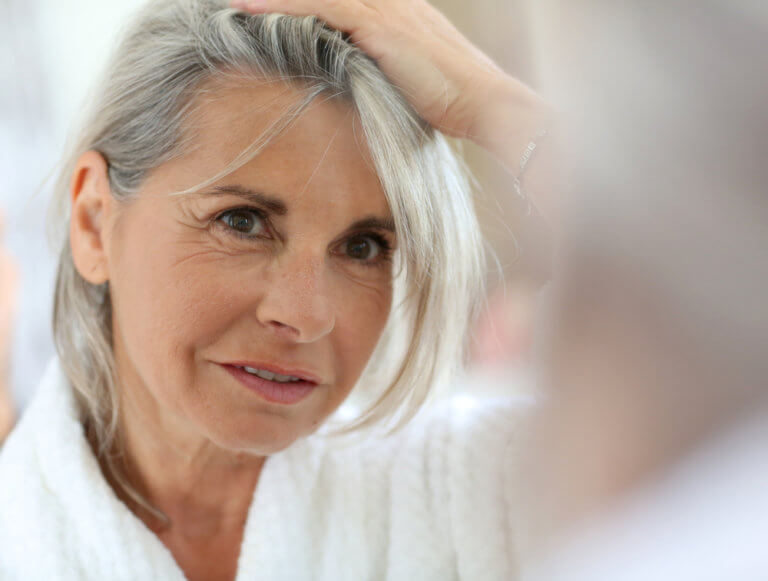
At some point in life, you look into the mirror and discover that wrinkles have popped up out of nowhere. Or so it seems…
In reality, many things have been happening “behind the scenes” in your skin over the years that have led to wrinkle formation. Genetics, of course, do play a role in the aging process, but there are multiple other factors that contribute to wrinkling– including some that can be addressed.
Knowing why wrinkles form and what you can do about it is key if you want younger-looking skin. And the best news of all is that you don’t need to use chemicals or harsh treatments at all!
Why Do Wrinkles Form? An Inside Look
Collagen Loss
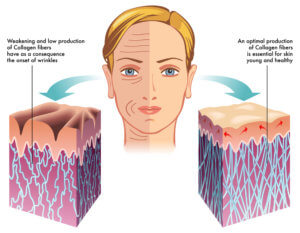
By now, you’ve probably heard of collagen, but if you haven’t, the short story is that it’s an incredibly important skin protein. Not only does collagen make up about 75% of your skin, it could also be considered the “anti-deflation” protein.
In essence, collagen helps your skin to keep its plumpness and strength. This, in turn, helps to prevent deflated-looking skin and keeps fine lines and wrinkles at bay.
Unfortunately, collagen production naturally starts declining in your body as you age. You can start to lose it as early as age 18, but the noticeable effects don’t usually show up until your 30’s. There are also numerous habits and stressors that accelerate collagen degradation, which we’ll get into later.
The bottom line is that collagen loss is a huge underlying cause of wrinkles that needs to be addressed if you want to diminish their appearance.
Elastin Loss
While collagen is a buzzword in skincare right now, elastin gets mentioned less often. Nevertheless, it’s an equally important skin protein with “anti-sag” action.
Elastin helps your skin to appear soft and smooth. It also helps it to “bounce back” from the effects of gravity and being stretched (think elasticity). Together, collagen and elastin provide flexibility that allows your skin to snap back into its original shape.
As you might imagine, elastin loss leads to saggy-, loose-looking skin, which is an open invitation for wrinkles to move in. And yes, elastin declines as you age just like collagen does and can also be affected by environmental factors.
To truly combat wrinkle formation, you have to address collagen and elastin loss— not just one or the other.
Thinning Skin & Fat Loss
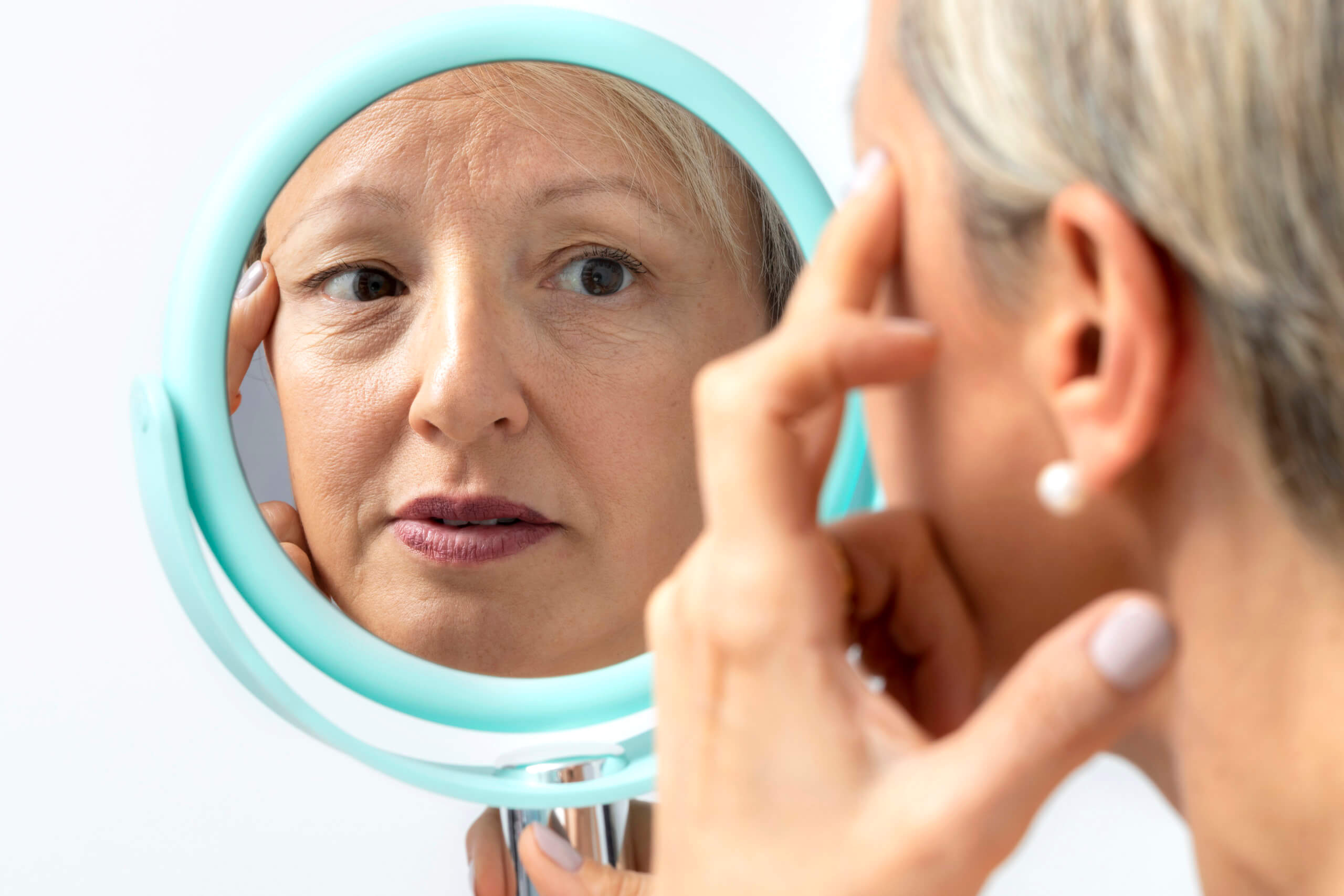
Another “side effect” of collagen (and elastin) loss is thinning skin.
Beneath the epidermis, which is the top layer of skin, lies a second layer known as the dermis. This is where collagen and elastin fibers are found. Notably, the dermis accounts for about 90% of the thickness of your skin.
As collagen— and to a lesser extent elastin— degrades over time, the dermis begins to breakdown and thin. Your skin cells also have a more difficult time doing “repair work” and are produced more slowly, further contributing to the thinning process.
With the loss of thickness, your skin will be much more prone to drooping, which further contributes to wrinkle formation. And to add insult to injury, fat in the deeper layers of your skin diminishes with age as well, making lines and saggy skin more pronounced.
Dry Skin
Something else you may notice as you get older is that your skin looks and feels drier. Of course, some people have skin that naturally produces more oil and won’t notice this effect as much. But for the most part, oil production in the skin declines with age, leading to dryness.
Most experts agree that dry skin is not a primary factor in wrinkle development. Instead, dryness simply makes wrinkles look more visible, since oil has a natural smoothing effect on skin.
However, it’s possible for dry skin to contribute to wrinkles in a different way. When your skin loses its natural oils, it also loses a key part of its natural barrier. This not only makes skin more sensitive to irritation, it also opens it up to certain toxins that do cause wrinkles.
To put it simply, addressing dry skin is important for both making wrinkles look less visible AND combating their formation.
What Causes Wrinkles? The Root(s) of the Problem
You now know more about the physical reasons wrinkles form. But there’s still the question of what causes or triggers these physical changes. Why do collagen and elastin diminish? Is there anything you can do about it?
Read on to learn about the most common culprits behind what we generally refer to as “skin aging”.
Photodamage
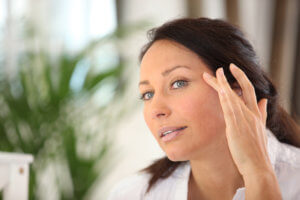
Photodamage is likely the #1 cause of premature skin aging and wrinkle formation. It occurs when unprotected skin is exposed to too much UV radiation from the sun. This radiation causes damage in the deepest layers of your skin that shows up eventually on the surface as wrinkles, dark spots, etc.
Some of the most significant damage that UV radiation causes is to collagen and elastin. It instigates the fragmentation of both collagen and elastin and also leads to the production of abnormal elastin.
Since you already know how greatly collagen and elastin loss contributes to wrinkles, it’s clear that photodamage must be addressed if you want smoother, younger-looking skin.
Free Radical Damage
Chances are good that you’ve heard of free radicals. To give you a quick summary, free radicals are unstable molecules that can damage other cells within your body, including proteins, lipids, and DNA.
Free radical damage is thought to be a major contributor to aging in general, but it’s now also strongly linked to skin aging specifically. In essence, when too many free radicals are generated, they can damage skin tissues and cells in a way that accelerates the aging process.
Once again, perhaps the most significant damage free radicals do in your skin is to degrade collagen and elastin. This, of course, accelerates wrinkle formation and other signs of aging.
Unsurprisingly, UV damage is a huge generator of free radicals, which is why it’s so harmful to your skin. Other environmental factors like pollution, toxins in skincare, and even chemicals in food can also stimulate free radical production.
Repetitive Movements (& Other Habits)

While much of wrinkle formation happens where you can’t see it (aka at the cellular level), there are also some surface-level contributors.
Perhaps one of the best examples of this is repetitive facial movements. Any expression or compression that makes creases in your skin increases the chance that wrinkles will develop in that area. Think things like frowning, laughing, squinting, sleeping with your face smashed into the pillow, and so on.
Obviously, you don’t want to give up laughing and smiling just to avoid wrinkles. But you may want to think about avoiding habits like squinting, sipping from a straw, or eye rubbing that may be creating fine lines.
You can also look through this list of the worst habits that accelerate skin aging to see what else you can change.
Naturally Addressing Fine Lines & Wrinkles
If you go the conventional route to get rid of wrinkles, your options mainly involve harsh chemicals that can irritate or sensitize your skin (like chemical peels) and treatments that literally injure your skin to make it repair itself (like dermabrasion). Or you can opt to have a neurotoxin injected into your skin.
Given the dangers and side effects associated with conventional options, it’s no surprise that people are looking for an alternative.
The good news is that you can effectively address wrinkles using a completely natural approach. But you do need to address all of the issues behind wrinkle formation to have success. (It’s not as hard as it sounds!)
Start with Natural Collagen Boosters
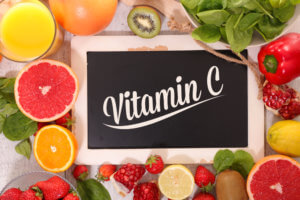
Maybe you’ve seen some skincare products with collagen and think that applying them to your skin will stop collagen loss. But here’s the problem: Collagen molecules are too large to be absorbed into your skin, making these products mostly useless.
So what is the answer?
Enter a natural, well-known nutrient: Vitamin C.
Vitamin C is one of nature’s best boosters of collagen. Studies have shown that applying it topically to your skin is especially effective for promoting collagen synthesis, and including it in your diet can help as well. In addition, topical vitamin C can improve skin thickness, which is also key for fending off wrinkles.
When you choose skincare products, look for ingredients rich in vitamin C like mango seed butter, camu camu extract, and amla extract.
Add In a Natural Elastin Booster
While there are numerous botanicals and foods rich in collagen-boosting vitamin C, addressing dropping elastin levels can be trickier. At least, this was the case before the discovery of a “new” ingredient: maple leaf extract.
Maples leaves have obviously been around for a long time, but researchers didn’t study them in depth for skincare until just recently. In fact, it was in 2018 that new research was presented on extracts from red maple leaves, revealing that they contained powerful compounds known as glucitol-core-containing gallotannins (GCGs).
Essentially, GCGs were found to block the activity of elastase, the enzyme that degrades elastin. This is a huge finding— one that led ScienceDaily to title its article on the research: “Maple leaf extract could nip skin wrinkles in the bud”.
One of the researchers even likened the extracts to a plant-based version of a commonly used drug, except without the need for injecting toxins into the skin. Definitely an ingredient to add to your anti-wrinkle skincare routine!
Protect Your Skin with Antioxidants

Wearing natural sunscreen when you plan to be outside for a while is a good plan for avoiding photodamage. (Non nanoparticle zinc sunblock is best.)
However, there’s another critical “ingredient” that must be in your skincare routine for skin protection: antioxidants.
If you recall, free radicals are the main agent involved in photodamage and overall skin aging. You have to protect your skin from the damage they cause if you want to prevent or combat wrinkles, and antioxidants are key to doing this.
To put it simply, research has shown that antioxidants powerfully protect your skin from both free radicals and photodamage. They do this mainly by working at the cellular level to shield skin cells, DNA, etc.
Particularly potent antioxidant-rich ingredients for protecting your skin and fending off wrinkles include astaxanthin, sumac berry extract, amla extract, and turkey tail mushroom extract.
Moisturize with Plant-Based Ingredients
It cannot be overstated how important moisturizing is if you want to diminish the appearance of wrinkles. Dry, dull skin will simply never look youthful and only makes wrinkles more visible and prominent.
Fortunately, there are numerous plant-based ingredients that provide your skin with the hydration it needs. The best approach is to look for a skincare product that uses a combination of lighter and heavier moisturizers. This is because the lighter ones tend to absorb more deeply into skin, while the heavier ones lock in hydration.
Some of the best lighter-weight options include aloe vera, sunflower seed oil, jojoba oil, rosehip seed oil, and evening primrose oil.
Richer, nourishing ingredients include cocoa seed butter, shea butter, coconut oil, and mango seed butter.
Don’t Forget Diet

High quality skincare products and a solid skincare routine can absolutely diminish the appearance of wrinkles, even if you do nothing else.
However, to truly get your youngest-looking skin, you also need to nourish it from the inside out.
Your skin needs various vitamins and minerals to be at its healthiest. Some of these (like vitamin C) can be beneficial when applied topically, but most are supplied to your body through your diet.
Conversely, there are certain toxins (particularly endocrine disruptors) in processed and conventionally grown food that can wreak havoc on your complexion. These you want to avoid as much as possible.
In general, the best approach is to eat lots of whole foods (particularly plant foods), avoid processed food, and buy organic when possible. You can also include some of these top foods for glowing skin into your diet regularly. And don’t forget to hydrate with pure water!
Putting it All Together into One Skincare Product
If you are in the market for a natural skincare product that effectively diminishes the appearance of wrinkles, look into the Age-Defying Dream Cream from Purity Woods.
This carefully formulated skincare cream addresses all the factors behind wrinkle formation.
It’s filled with collagen-boosting ingredients that are rich in vitamin C as well as three different maple leaf extracts. It’s also packed with premium moisturizers like mango seed butter and aloe vera and numerous antioxidant ingredients.
To add to this, the entire formula is USDA Certified Organic so that you can be sure there are no toxins or synthetic ingredients going on your skin. What you will get is an effective and 100% natural solution to wrinkles and numerous other signs of aging.
Learn more about the Age-Defying Dream Cream here, and don’t forget to check your diet and daily habits to take on wrinkles from all angles!


